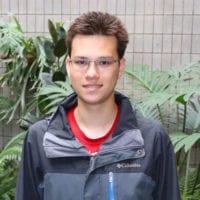
A Genomic Framework for Informing Conservation of the Threatened Plant Species Aconitum noveboracense
The genus Aconitum (known colloquially as monkshood and wolfsbane) is important both for its use in Traditional Chinese Medicine and for the range of metabolites it can produce. Relatively little is known about North American Aconitum, including the federally threatened Aconitum noveboracense. Because A. noveboracense is normally found in cool environments and prefers rare ecosystems such as talus slopes, we hypothesize that climate change may pose a threat to the species. In order to establish that conservation efforts are necessary, however, we must determine whether or not A. noveboracense is taxonomically distinct from species such as the closely related and less threatened A. columbianum. To build a phylogeny of North American Aconitum, we performed a large-scale genomic analysis of 80 individuals using RAD-seq, calling SNPs using STACKS 2.4. Our results indicate that A. noveboracense is monophyletic, which, in combination with high pairwise FST and low admixture between A. noveboracense and A. columbianum, imply that A. noveboracense is genetically distinct from related species. Now that we better understand the evolutionary history and relationships between North American Aconitum species, we can investigate what possible forces are threatening A. noveboracense. A future direction in ecological niche modeling to understand how Earth’s changing conditions may affect the distribution of A. noveboracense may allow us to hone in on specific dangers to this threatened species.
My Experience
The most important lesson I learned while working at BTI is how powerful collaboration can be in science. It’s been an excellent experience to work with and learn from a variety of people who each have their own area of expertise. Working with my mentor Dr. Suzy Strickler gave me insight into how projects are conceived, proposed, and carried out, all parts of which can involve working with collaborators. Dr. Strickler was helpful on guiding all parts of my project, from theoretical framework to computational methods, and getting more voices only improved the project. I discussed quirks of the raw sequence data with Duncan Hauser, the lab technician who sequenced the data. I talked with Dr. Jacob Landis, a postdoc in the Specht lab, about programs I was using that he had experience with. Dr. Strickler and I were able to get more voices from PIs Chelsea Specht and Fay-Wei Li about general strategies for our analysis. And I learned that without the help John Wiley from the US Fish and Wildlife Service, we might not have the samples that were used to generate the sequence data I used. I discovered that having multiple voices can strengthen a project, and that everyone has unique skills and perspectives regardless of their status in academia. I came into the program expecting to work on my own, and came out having learned from a variety of experts with a greater understanding for how collaboration can improve science.
